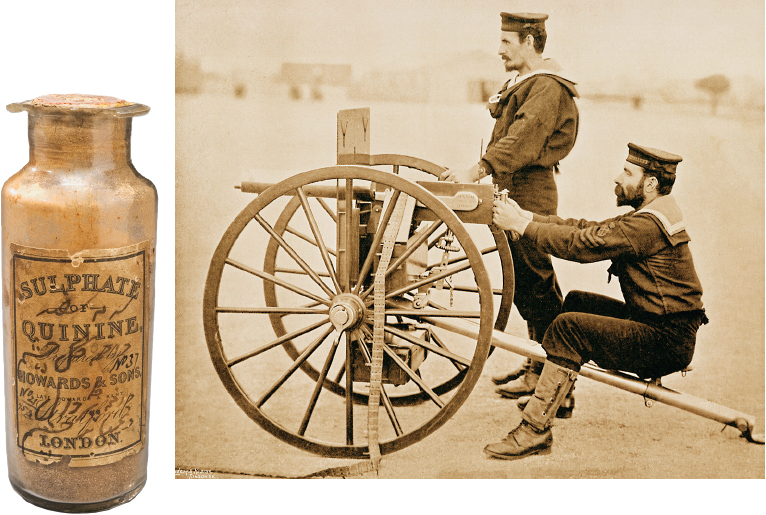Understanding Western Society
Printed Page 753
Chapter Chronology

Tools for Empire BuildingWestern technological advances aided Western political ambitions in Africa and Asia. The Maxim machine gun shown above, right was highly mobile and could lay down a continuous barrage that would decimate charging enemies, as in the slaughter of Muslim soldiers at the Battle of Omdurman in the Sudan. Quinine (above, left) was also very important to empire building. First taken around 1850 in order to prevent the contraction of deadly malaria, quinine enabled European soldiers and officials to move safely into the African interior and overwhelm native peoples. (gun: Lordprice Collection/Alamy; quinine: Wellcome Library, London)
TTHE EXPANSION OF WESTERN SOCIETY reached its apex between about 1880 and 1914. In those years, the leading European nations rushed to create or enlarge vast political empires. This political empire building contrasted sharply with the economic penetration of non-Western territories between 1816 and 1880, which had left a China or a Japan “opened” but politically independent. Because this renewed imperial push came after a long pause in European expansionism, contemporaries termed it the new imperialism.
The new imperialism had momentous consequences. By the early 1900s, almost 84 percent of the globe was dominated by European nations. The new imperialism created new tensions among competing European states and led to wars and threats of war with non-European powers. Aimed primarily at Africa and Asia, the new imperialism put millions of black, brown, and yellow peoples directly under the rule of whites.
